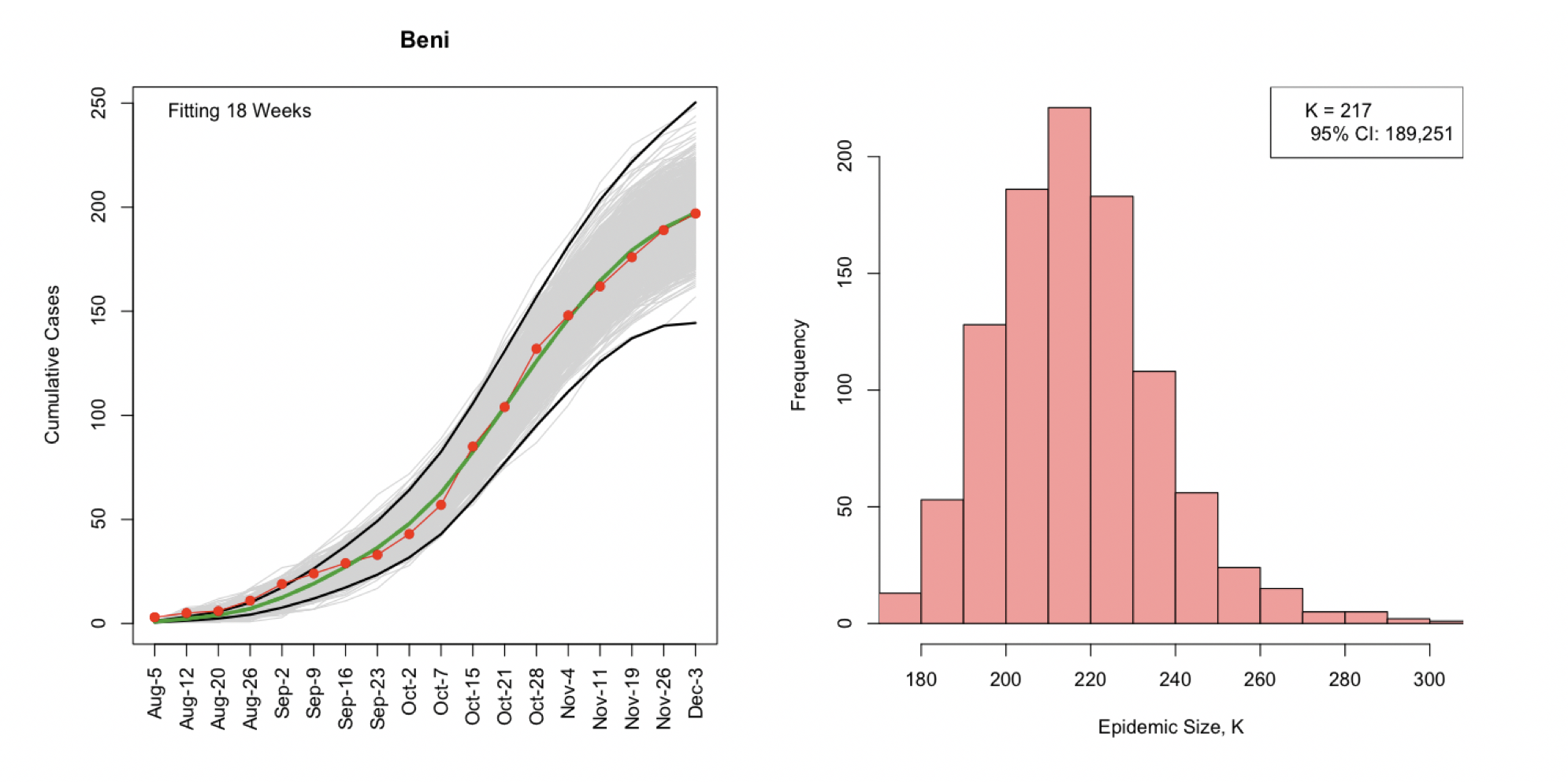Ebola
Ebola is an infectious disease caused by the Ebola virus, and currently occurs in intermittent outbreaks in tropical regions of sub-Saharan Africa. It was first identified in 1976 based on two simultaneous outbreaks (South Sudan and the Democratic Republic of the Congo, the latter occurring in a village near the Ebola River). Between 1976 and 2012, there were 24 outbreaks resulting in almost 2400 cases and almost 1600 deaths. In 2014, however, an outbreak in West Africa resulted in almost 29,000 cases and 11,000 deaths.
Our Contribution
Our initial investigations of the transmission of EVD began in early 2014, following the outbreaks in Liberia Sierra Leone, and Guinea. We developed our own version of the Wallinga-Teunis, which provides daily estimates of the reproduction number. Following that we used the machinery of DICE to make both retrospective estimates for the transmission dynamics in the three countries, as well as forecasts for near-term cases and deaths. We also applied our SARIMA statistical model, which had been initially developed to study Dengue (LINK).
More recently, we have analyzed the August 2018 outbreak in the North Kivu province of the Democratic Republic of Congo (DRC). Updates to the total number of cases (confirmed and probable) were published on a daily or nearly daily basis. (including deaths, probable and confirmed). Detailed situation reports were published every 6-8 days and contained tables with numbers by region: total cases, confirmed cases, probable cases, cases under investigation, total death, confirmed death and probable death. We continued to retrieve the reports, recording all the numbers and analyzing the data on a region level using a functional form for the cumulative incidence (Figure 1).

Figure 1: On the left, the cumulative number of cases of Ebola in Beni, DRC. Data are shown in red, best fit model in green, and realizations in grey. The black curves mark the 5/95% confidence intervals. On the right, a histogram of the epidemic size based on bootstrap analysis.
Data
We have added historical Ebola data from the Democratic Republic of the Congo (DRC) from 1976 through 2014, as well as the 2018 outbreak,
to our infectious disease web explorer, which can be found at:
http://www.predsci.com/id_data/
Data can be viewed, analyzed, and downloaded from this portal.
The source comes from the Supplementary data from Rosello et al. (2015)[1], which contains a line-list of Ebola cases during this interval.
All the data collected and processed in our ebola studies has been made publicly available through our infectious disease web explorer,
which can be found at:
http://www.predsci.com/id_data/
Future Plans
Currently, our team is re-focusing its efforts on better understanding the spread and severity of COVID-19, using the lessons learnt from influenza forecasting.
[1] Rosello, A., Mossoko, M., Flasche, S., Van Hoek, A. J., Mbala, P., Camacho, A., ... & Piot, P. (2015). Ebola virus disease in the Democratic Republic of the Congo, 1976-2014. Elife, 4, e09015